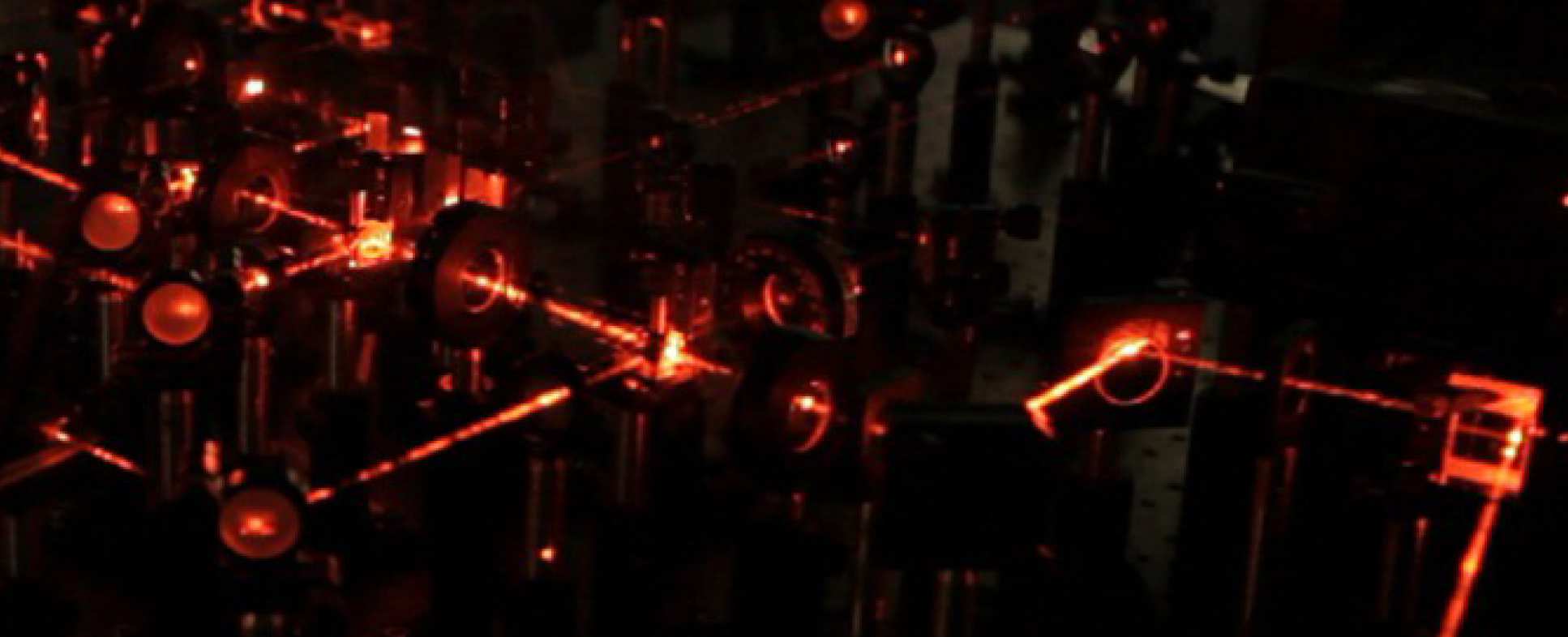
Laser Cooling and Magneto-Optical Trapping
- Concept
- Slowing and cooling a beam of CaF
- Magneto-optical trapping
- Laser cooling to a few microkelvin
- Magnetic trapping and coherent control
- Further reading
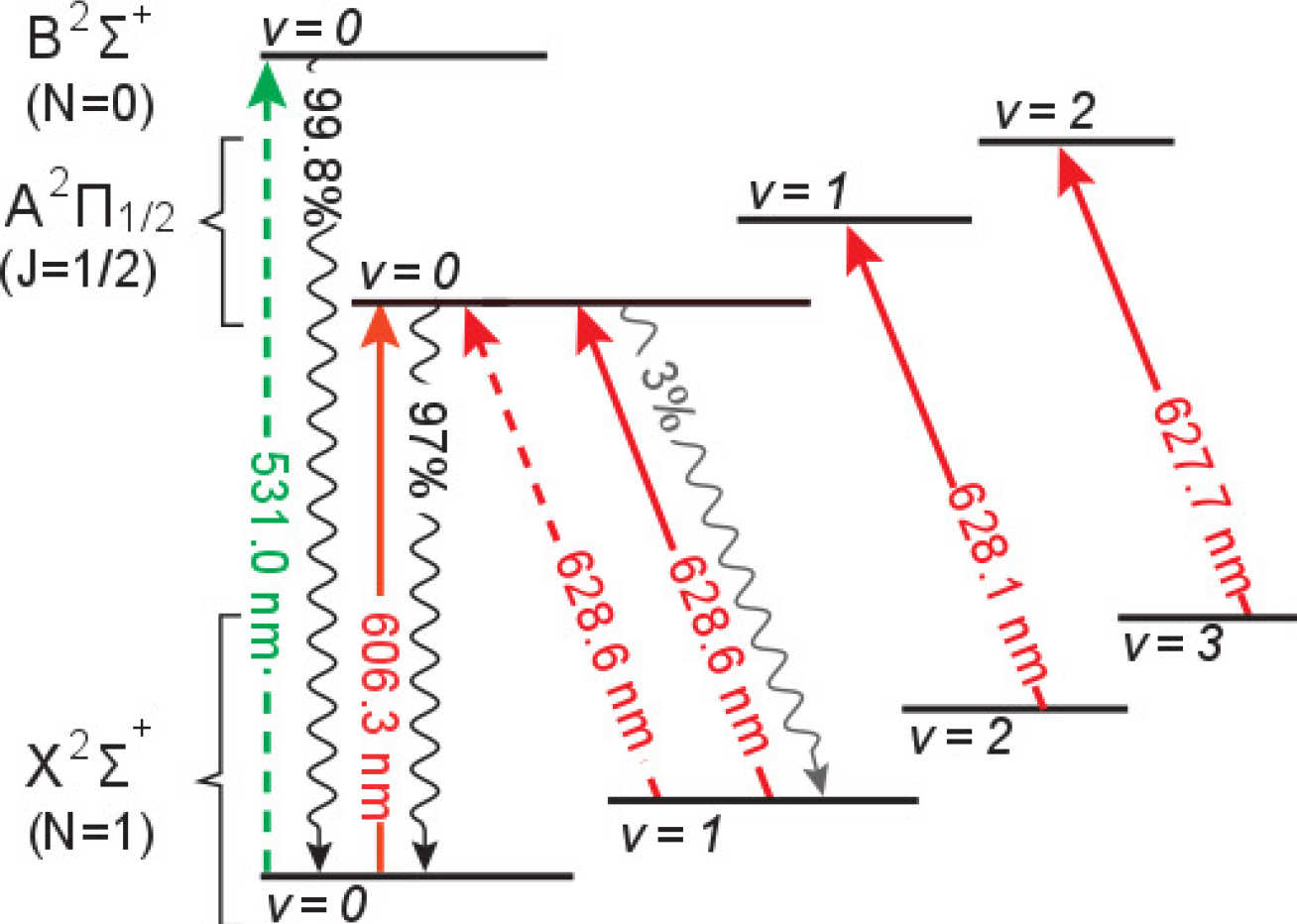
Laser cooling is more difficult for molecules than for atoms because molecules have a more complicated energy level structure. In particular, a molecule in a single vibrational level of an electronically excited state can usually decay to many vibrational levels in the ground electronic state. This means that many lasers are needed to ensure that the molecule keeps scattering photons. For some molecules the vibrational state is unlikely to change in the electronic decay, and then laser cooling is feasible using just a few laser frequencies. We are working on laser cooling of CaF and YbF molecules. The figure shows the cooling scheme used for laser cooling and magneto-optical trapping of CaF. Only 5 lasers are needed!
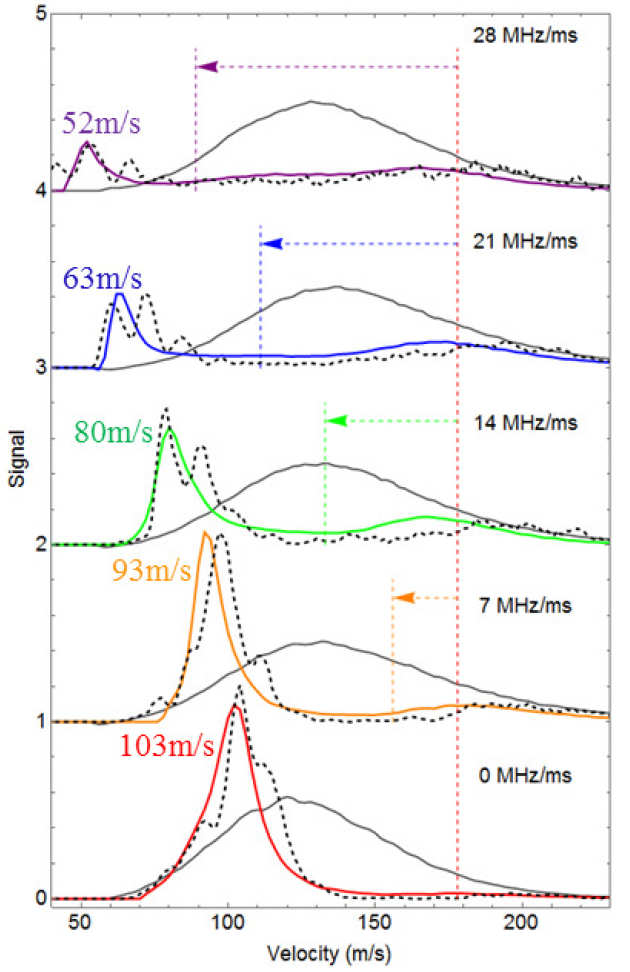
Before we can trap the molecules in a magneto-optical trap, they have to be slowed down. We make a beam of CaF molecules moving at 150m/s using cryogenic buffer gas cooling. The radiation pressure of counter-propagating laser light slows down the molecular beam. The frequency of the light is chirped to follow the changing Doppler shift as the molecules decelerate.
The graph shows the speed distributions that we measure. The black curves are obtained when no laser slowing is applied and the coloured ones when the slowing is applied with various frequency chirps. The radiation pressure slows down the molecules and also bunches up their velocity distribution. The dashed lines are the results of our numerical modelling. Using this method, we are able to slow molecules down to the capture velocity of a magneto-optical trap. The next step is to trap them.
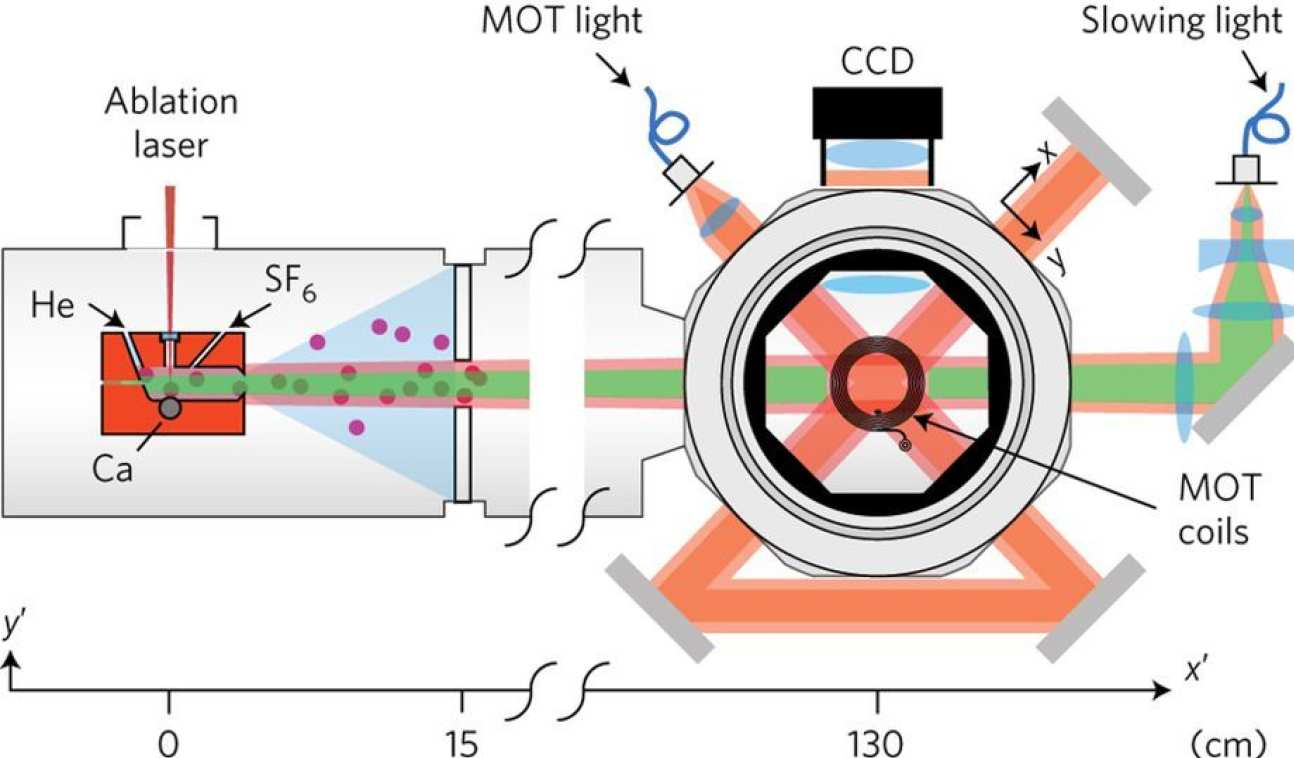
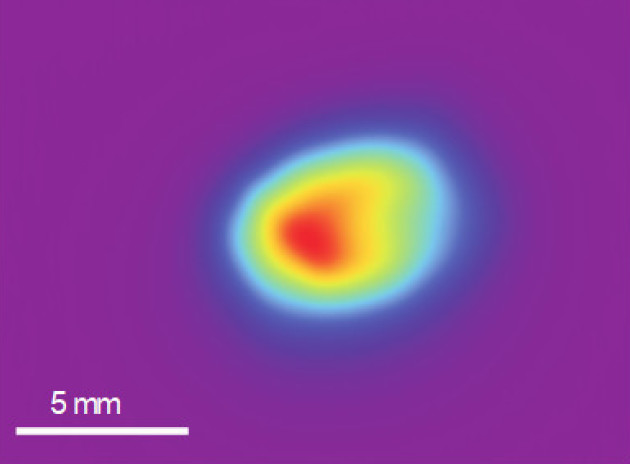
Magneto-optical traps use laser light and magnetic fields to cool and trap particles. For many years they have been the workhorse of ultracold atom experiments, providing cold clouds of atoms that serve as the starting point for atomic clocks, quantum degenerate gases and ultra-precise measurements.
We have developed a magneto-optical trap (MOT) for CaF molecules using the apparatus shown above. We create a beam of these molecules, slow them with a frequency-chirped laser, and then load them into our trap where they cool to about 10 mK. The picture shows a MOT of about 20,000 CaF molecules obtained by imaging their fluorescence onto a CCD camera.
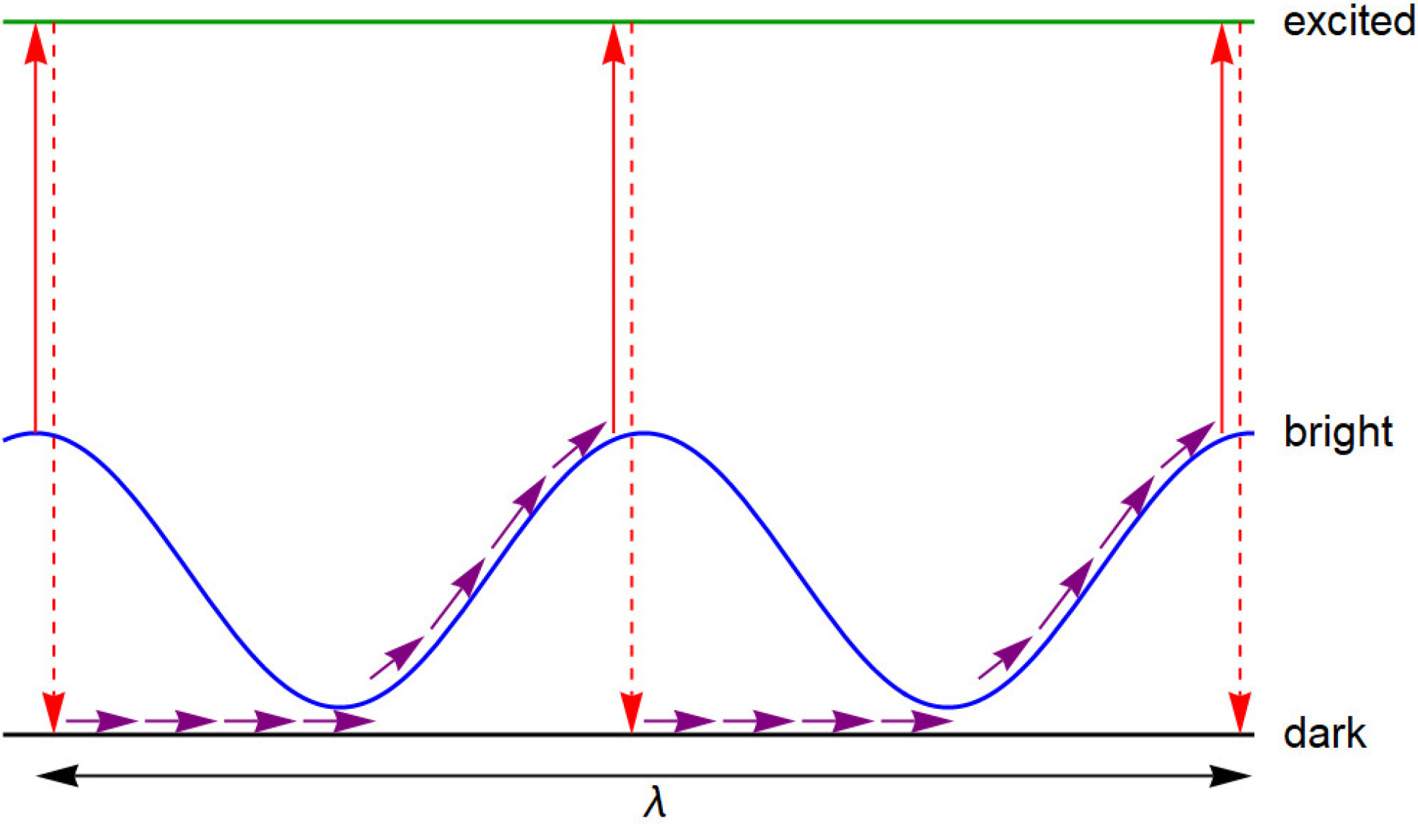 Once the molecules are trapped in the MOT, we use sub-Doppler cooling methods to cool them to ultracold temperatures. We have reached temperatures as low as 5 microkelvin this way. The images below show the ballistic expansion of an ultracold cloud of CaF molecules. Here, the temperature is about 50 microkelvin.
Once the molecules are trapped in the MOT, we use sub-Doppler cooling methods to cool them to ultracold temperatures. We have reached temperatures as low as 5 microkelvin this way. The images below show the ballistic expansion of an ultracold cloud of CaF molecules. Here, the temperature is about 50 microkelvin.

After cooling the molecules to low temperature, we turn off the lasers and trap the molecules in a pure magnetic trap. They remain trapped for about 5 s, limited by vibrational excitation due to blackbody radiation at room temperature. We can prepare the molecules in a single, selected quantum state, and also prepare them in superpositions of rotational states that exhibit long coherence times. The data below shows Ramsey interference where the magnetically-trapped molecules are in a superposition of two different rotational states.

For further information, please consult these review articles.
- M. R. Tarbutt, Laser cooling of molecules, Contemporary Physics 59, 356 (2019). This is an easily accessible article, especially suitable for those who are new to the field.
- N. J. Fitch and M. R. Tarbutt, Laser cooled molecules, arXiv:2103.00968 (2021). This is a more in-depth review article.
For a full list of our papers, please visit our publications page.